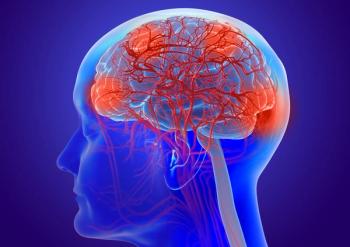
- Oncology Vol 28 No 7
- Volume 28
- Issue 7
Breast Cancer Brain Metastases: One Step at a Time
For many women, the prospect of tumors growing in their brain that may eventually impact their ability to communicate, interact, and remember is terrifying.
Brain metastases in patients with breast cancer represent a devastating and difficult diagnosis. Oftentimes, patients have completed the long road of primary therapy for advanced disease, and are either diagnosed when they begin to have seizures or vague neurocognitive symptoms, or perhaps most insidiously when asymptomatic lesions are found on surveillance imaging. For many women, the prospect of tumors growing in their brain that may eventually impact their ability to communicate, interact, and remember is terrifying. Whatever our definition of “personhood,” certainly brain function is critical to our sense of individuality and to where our “self” resides.
Because of the importance of this subject, I was gratified to read the excellent article by Drs. Lim and Lin on breast cancer brain metastases (BCBM) in this issue of ONCOLOGY. They provide a nice review of the current state of the art and of ongoing trials of systemic therapy. They go through the challenges of treating brain metastases with systemic agents, and focus in particular on human epidermal growth factor receptor 2 (HER2)-positive and triple-negative cancers. They provide heartening evidence of ongoing work and leave us hopeful that someday we may have more effective systemic tools for the treatment of this deadly entity.
My own medical practice involves, in part, treating patients with brain metastases using stereotactic radiosurgery. Given the relatively well-tolerated nature of current radiosurgical techniques, it is common for asymptomatic patients to remain that way after treatment. Furthermore, we know from the work of Sperduto et al[1] that patients with BCBM often have prolonged survival but also inevitably succumb to their disease. As a result, I frequently find myself having long and difficult conversations with lucid, thoughtful patients who often have very few physical manifestations of disease, but who I know are very likely to die in the next couple of years. These are perhaps the most difficult conversations to have; sometimes the women have young children with them at their appointments, and sometimes they bring their mothers or partners with them-often stoic or putting on a brave face-living for today, and hoping for more tomorrows.
In light of the current progress being made, and the sometimes-limited life expectancy of these patients, how do we situate the new (and presumably expensive) therapies described by Drs. Lim and Lin in the context of the current resource-limited healthcare system? End-of-life care in particular has been targeted by policy makers as an area where the cost of medical care exceeds its supposed value. How does a physician reconcile the need to practice fiscally responsible medicine and the patient’s desperate desire for hope? Better evidence and clinical investigation are the keys to solving this dilemma.
I am gratified by this review. It is heartening to know that investigators are working hard to improve the current state of affairs, and that progress is being made. It is my hope that someday we will be able to talk about cures and life expectancies on the order of decades. Until then, the hard conversations will continue, and incremental progress through careful clinical trials will be made.
Financial Disclosure:The author receives research support from 21st Century Oncology.
References:
1. Sperduto PW, Kased N, Roberge D, et al. The effect of tumor subtype on the time from primary diagnosis to development of brain metastases and survival in patients with breast cancer. J Neurooncol. 2013;112:467-72.
Articles in this issue
over 11 years ago
Primary CNS Lymphoma: The Role of Resectionover 11 years ago
Updates on the Management of Breast Cancer Brain Metastasesover 11 years ago
‘Watch-and-Wait’ for Rectal Cancer: What's the Way Forward?Newsletter
Stay up to date on recent advances in the multidisciplinary approach to cancer.


















































































